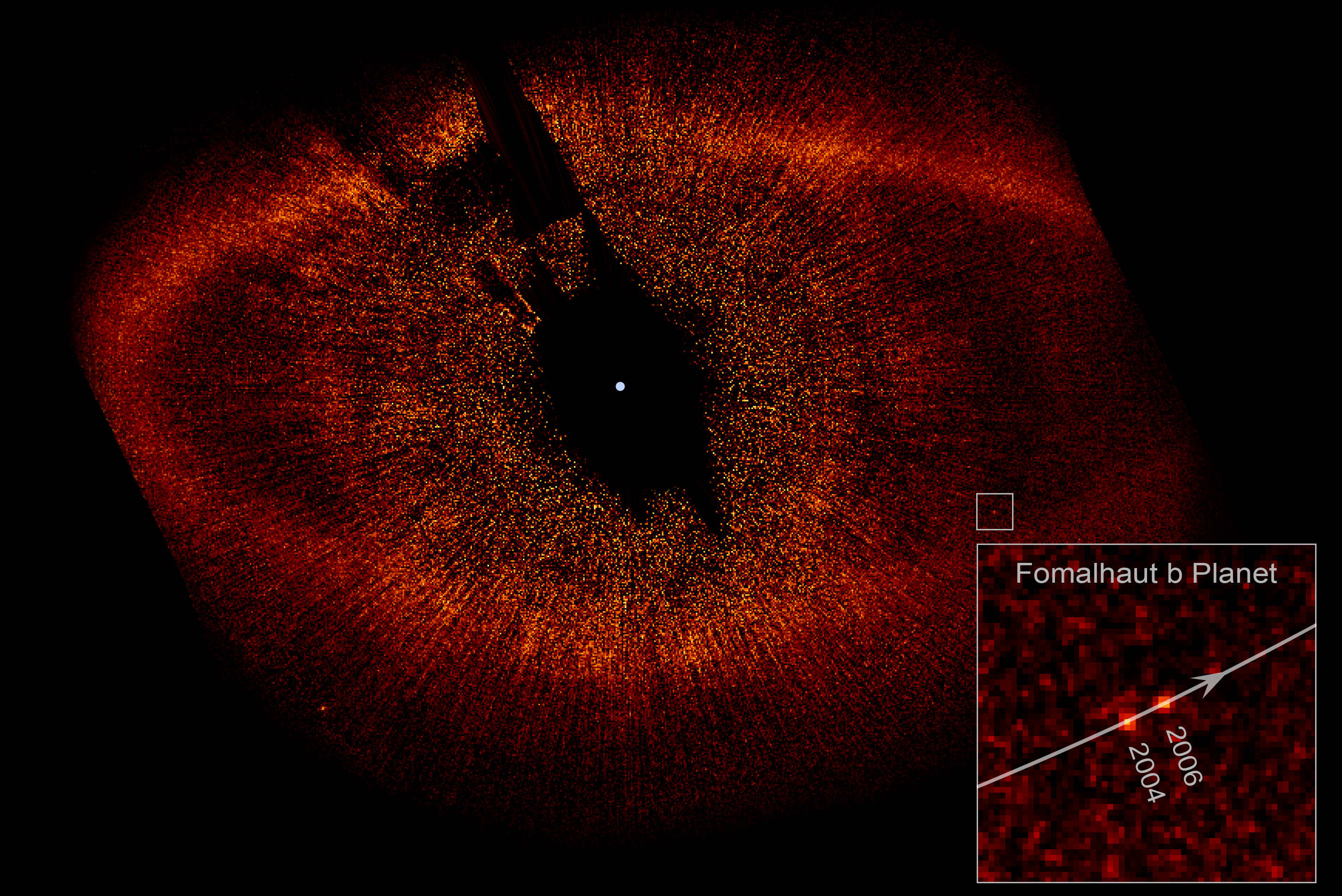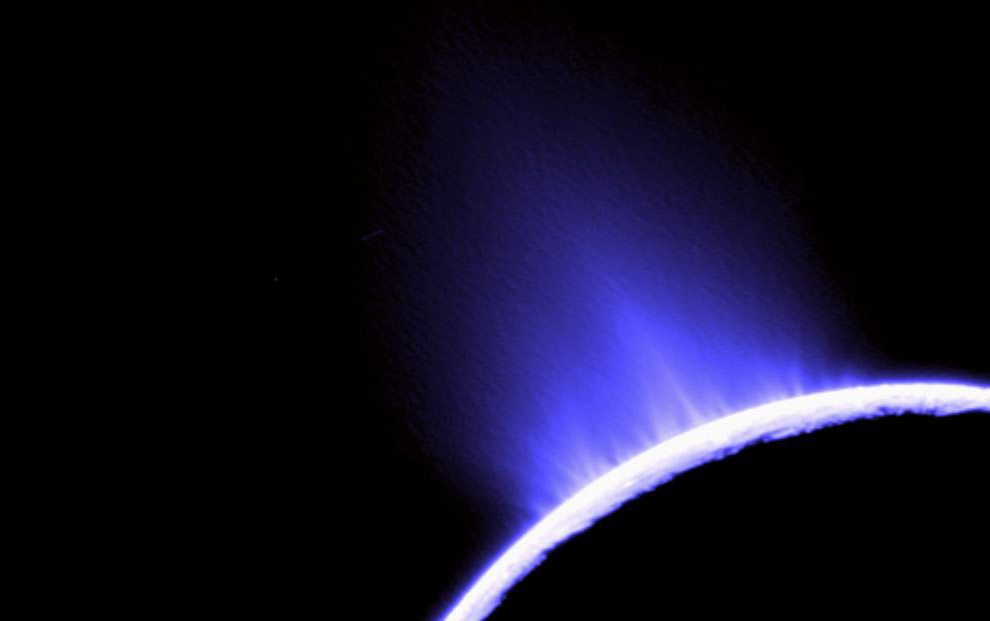
Above: infrared view of Fomalhaut's dust disk, taken by the Herschel Space Observatory (credit JPL/NASA). Below: a stellar coronagraph image of the Fomalhaut system, showing Fomalhaut b.

Fomalhaut is getting added to my little directory of solar systems that are weird in interesting ways; anomalously dusty systems are interesting (see Eta Corvi here). For one thing, its ring is thin and has sharp edges which are shepherded by two Earth-sized planets, much further from their star than such planets are in our own system (more than twice as far as Pluto is from the sun at the farthest point of its eccentric orbit). And that dust cloud contains at least hundreds of billions of comets, which are constantly smashing together. This stellar mixmaster is obviously interesting for those of us that think biomolecules may be spreading via water-ice in space (and hyperbolic comets could seed new solar systems) and that maybe comets are even the best place to look for the signature of von Neumann probes.

Ice geysers on Saturn's moon Enceladus spraying into orbit.
Do note that we have zero evidence so far for panspermia or alien singularities, but it's still a lot of fun to speculate.
You can read about the darkest planet, the most densely packed solar system, or an anomalous hotspot, on the list of interestingly weird planets discovered so far. The full list, in decreasing order of curiousness:
1. Fomalhaut
2. Eta Corvi (old but dusty - disassembled for computation?)
3. GSC 03549-02811 (darkest)
4. Andromedae B (anomalous hotspot)
5. Kepler-11 (densely packed)
No comments:
Post a Comment